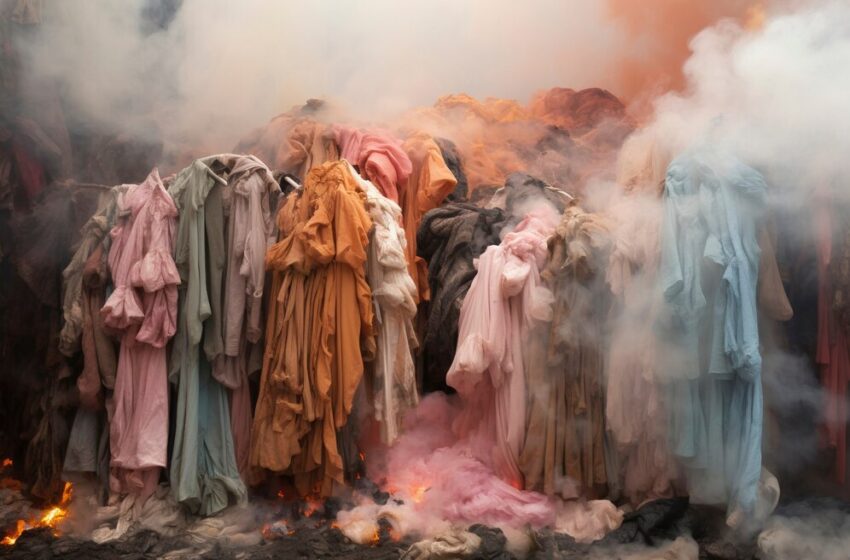The Global Impact of Fast Fashion on the Environment and Economy

In recent years, the fast fashion industry has come under scrutiny for its considerable impact on both the environment and the global economy. Characterized by cheap manufacturing, rapid turnover of trends, and throwaway culture, fast fashion has been both a democratizing force in fashion and a significant contributor to environmental degradation and economic disparities. This article explores the multifaceted impacts of fast fashion, underscoring the urgent need for sustainable practices within the industry.
Environmental Toll of Fast Fashion
Resource Consumption and Waste: Fast fashion’s environmental footprint is staggering, primarily due to its immense consumption of water and raw materials. The industry is one of the largest consumers of water globally, with vast quantities required for cotton cultivation and dyeing processes. Moreover, the sector generates a significant amount of waste, with millions of tons of clothing ending up in landfills each year, where they emit greenhouse gases as they decompose.
Pollution: The production and disposal processes associated with fast fashion contribute extensively to pollution. Chemical dyes and treatments used in manufacturing release toxic substances into water bodies, affecting aquatic ecosystems and local communities’ water supplies. Additionally, the reliance on synthetic fibers, such as polyester, exacerbates the issue of microplastic pollution in the oceans.
Carbon Emissions: The global fashion industry is a notable contributor to carbon emissions, with fast fashion accounting for a substantial share due to its energy-intensive production, frequent shipping of new collections, and reliance on synthetic materials derived from fossil fuels.
Economic Impacts
Labor Exploitation: Fast fashion’s cost-cutting measures often come at the expense of workers’ rights and wages. The industry is notorious for its poor working conditions, particularly in developing countries where labor laws are less stringent or poorly enforced. Workers face long hours, inadequate pay, and unsafe conditions, highlighting significant ethical concerns within the fast fashion supply chain.
Market Saturation and Volatility: The rapid production cycles and constant introduction of new trends have led to market saturation, making it increasingly difficult for traditional and sustainable fashion brands to compete. This volatility can undermine economic stability in the fashion sector, affecting jobs and leading to a race to the bottom in terms of price and quality.
Impact on Local Economies: While fast fashion has created jobs in manufacturing sectors of developing countries, it has also been criticized for undermining local textile traditions and economies. The influx of cheaply produced garments from abroad has made it challenging for local artisans and small businesses to compete, eroding cultural heritage and economic diversity.
Towards a Sustainable Future
Consumer Awareness and Behavior Change: Growing awareness of fast fashion’s impacts has spurred a shift towards more sustainable consumption practices. Consumers are increasingly seeking out ethical and eco-friendly brands, embracing second-hand and vintage clothing, and advocating for greater transparency in the fashion industry.
Innovative Business Models: Some forward-thinking companies are exploring sustainable business models, such as recycling and upcycling, subscription and rental services, and producing clothing from environmentally friendly materials. These initiatives represent a move towards a circular economy that reduces waste and environmental impact.
Policy and Regulation: Governments and international bodies have a role to play in mitigating the negative impacts of fast fashion. Implementing stricter environmental regulations, supporting sustainable practices through subsidies and incentives, and enforcing labor standards can drive significant change in the industry.
Conclusion
The global impact of fast fashion on the environment and economy is profound and multifaceted, posing significant challenges to sustainable development. However, the growing momentum towards ethical consumption, combined with innovations in sustainable fashion and regulatory efforts, offers hope for a more responsible and environmentally friendly fashion industry. As consumers, businesses, and policymakers become more attuned to the consequences of fast fashion, the industry stands on the brink of a transformative shift towards sustainability.
(Nominate Now: Join us to spotlight your achievements! Be part of the elite in the business and finance community. Exciting opportunities await!)






